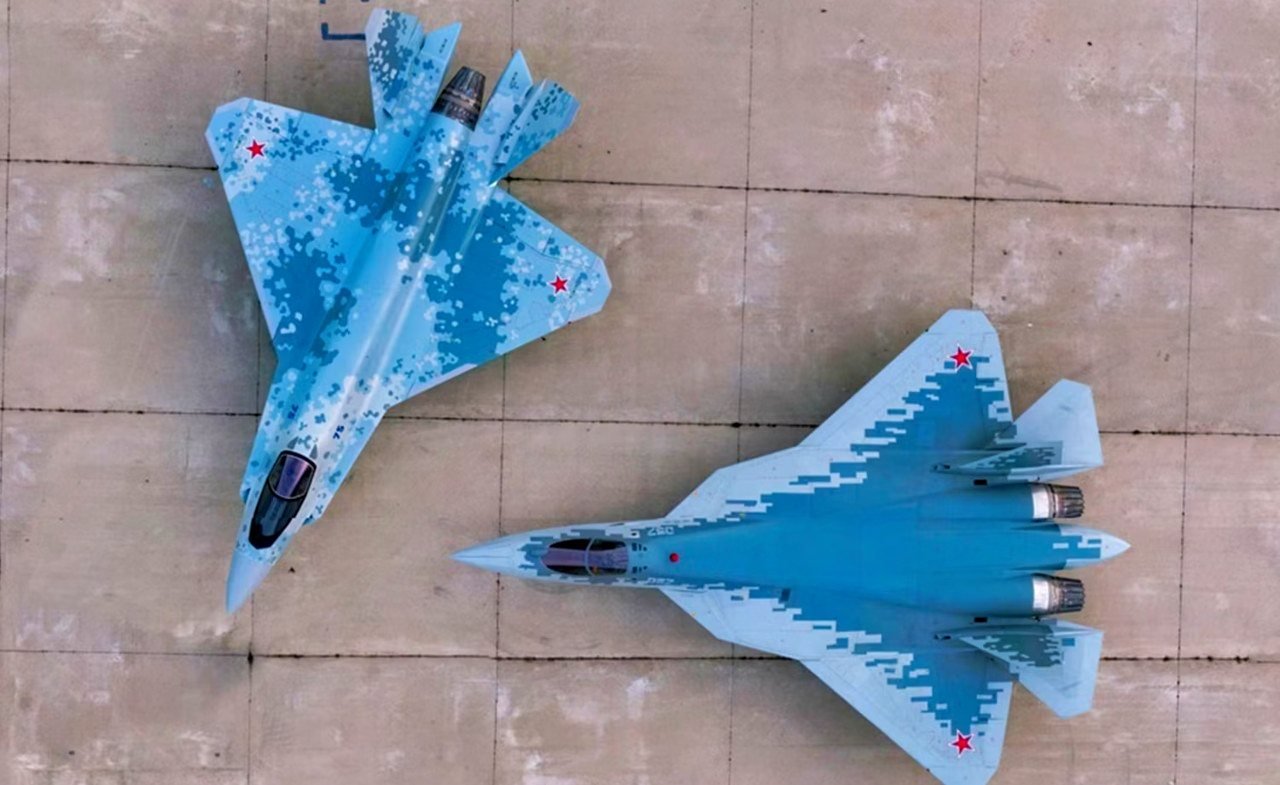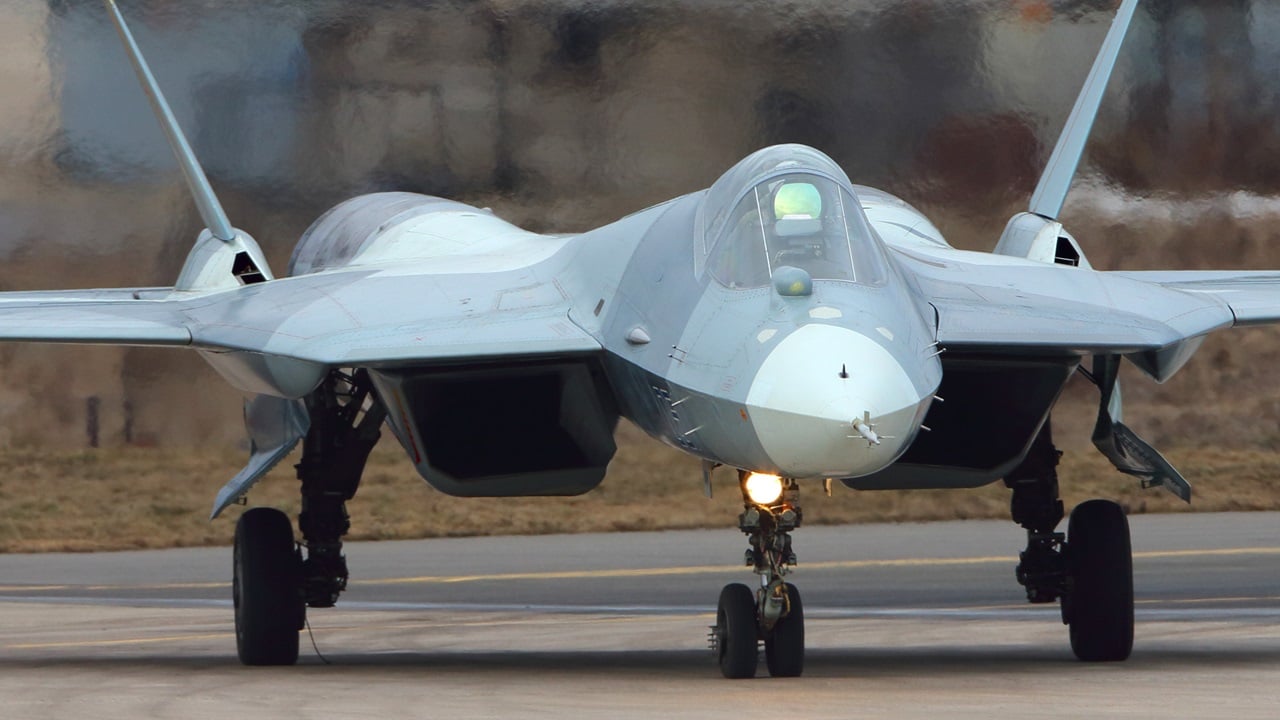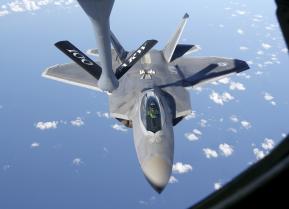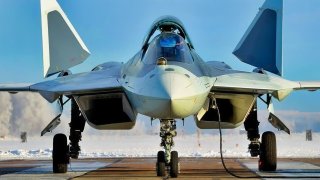Former Admiral Wants Su-57 Fighters on Russian Aircraft Carriers
Russia's flagship aircraft carrier, Admiral Kuznetsov, remains docked as its prolonged refit drags on, with deployment unlikely before 2025. Despite this, some Russian officials, like retired Vice Adm. Vladimir Pepelyaev, advocate for a future fleet of carriers equipped with the Sukhoi Su-57 stealth fighter.
Summary and Key Points: Russia's flagship aircraft carrier, Admiral Kuznetsov, remains docked as its prolonged refit drags on, with deployment unlikely before 2025. Despite this, some Russian officials, like retired Vice Adm. Vladimir Pepelyaev, advocate for a future fleet of carriers equipped with the Sukhoi Su-57 stealth fighter.

-However, this idea is highly impractical. The Su-57 was not designed for carrier operations, and Russia's plans to expand its Su-57 fleet have already faltered.
-With reports of damaged Su-57s and no significant progress on a naval variant, such ambitions seem unrealistic, highlighting the disparity between Russia's aspirations and its current capabilities.
Why Russia's Su-57 Carrier Ambitions Are Far From Reality
Russia's flagship aircraft carrier Admiral Flota Sovetskogo Soyuza Kuznetsov remains in port as the warship's epic refit continues. Some reports suggest work could be completed this year, but even if that happens, Admiral Kuznetsov will not likely deploy again until the end of 2025
Yet this has not dissuaded some in Russia from believing that carriers are the future of the nation's sea force. As previously reported, retired Vice Adm. Vladimir Pepelyaev is among the Russian officials who believe aircraft carriers are critical for Russia's future, and he has pushed for a fleet that could project power around the world.
While that is already ambitious enough, Pepelyaev also suggested recently that a future airwing for such flattops could include the Sukhoi Su-57. To suggest that this plan is ambitious would be an understatement. Any suggestion to put the fifth-generation stealth fighter on a carrier borders on the absurd.
Russia's F-35? Not Quite
Perhaps Pepelyaev actually believes the Su-57 is Russia's equivalent of the Lockheed Martin F-35 Lightning II, as both are described as "fifth-generation" fighters with stealth capabilities. Both are multirole fighters designed to perform air-to-air sorties and fly in a ground-attack role.
The similarities end there.
The F-35 was developed as a "Joint Strike Fighter" and is produced in three specific variants, including the F-35C, a carrier-specific model.
As noted by Maya Carlin for The National Interest, "As the carrier variant of the Joint Strike Fighter, the F-35C is purpose-built for operations aboard the U.S. Navy’s fleet of Nimitz- and Ford-class supercarriers. In order to maintain lower speeds during take off and landing, and to land on such short runways, this variant’s wingspan is the widest of the three. The Charlie's wingtips are also able to fold in as a space-saving measure when deployed on the ship, an essential asset since space aboard these supercarriers is limited. Additionally, the F-35C features heavy-duty landing gear and a tail hook."
Moreover, it is necessary to note that the F-35C was designed to carry nearly 20,000 pounds of internal fuel to extend its range to more than 1,200 nautical miles.
A Su-57 Carrier Variant
The F-35C was developed for a very specific role from the beginning of the Joint Strike Fighter program. It wasn't simply adapted from the F-35A model.
There have been reports that Russia wants to develop a naval variant of the Su-57.

United Aircraft Corporation CEO Yury Slyusar told TASS in August 2022 that, "Russia's Maritime Doctrine stipulates building advanced aircraft carriers. From our viewpoint, the most promising area involves building a carrier group based on the fifth-generation fighter and also using drones. The groundwork laid under the Su-57 program makes it possible to solve the tasks of the Russian Navy's naval aviation within the shortest time possible."
However, in the nearly two years since, we have heard virtually nothing about these efforts – and likely nothing has occurred. The reasons are simple.
First, the Su-57 wasn't conceived for carrier operations, and today's advanced aircraft cannot be easily modified to operate from a carrier.
A bigger consideration still is that two years ago, the Kremlin announced it would receive 22 more Su-57s by this year, with the fleet expected to increase to 76 aircraft by 2026. But it doesn't look like the Russian Aerospace Forces are actually on track to receive these fighters.
Moreover, given that at least one and possibly two Su-57s were seriously damaged or destroyed during a Ukrainian raid on an airfield in Akhtubinsk, 350 miles from Ukraine, the number of Su-57s may have decreased, not increased.
So, while officials like Pepelyaev can make bold claims about Russian carriers operating fifth-generation fighters, we should be excused for thinking he's joking. It's simply too funny to be taken seriously.
Author Experience and Expertise: Peter Suciu
Peter Suciu is a Michigan-based writer. He has contributed to more than four dozen magazines, newspapers, and websites with over 3,200 published pieces over a twenty-year career in journalism. He regularly writes about military hardware, firearms history, cybersecurity, politics, and international affairs. Peter is also a Contributing Writer for Forbes and Clearance Jobs. You can follow him on Twitter: @PeterSuciu. You can email the author: [email protected].
All images are Creative Commons or Shutterstock.
From the Vault
Russia Freaked Out: Why the U.S. Navy 'Unretired' the Iowa-Class Battleships
Battleship vs. Battlecruiser: Iowa-Class vs. Russia's Kirov-Class (Who Wins?)


